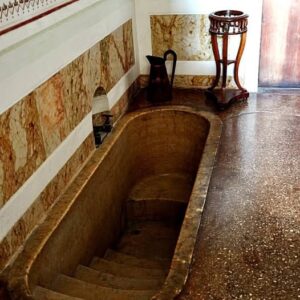In the latest archaeological breakthrough in Frankfurt, a significant discovery has been unearthed at a Roman cemetery in the Heilmannstraße area, once part of the ancient Roman city of Nida. The excavation, conducted between 2017 and 2018, revealed a total of 127 graves, a considerable number of which featured inhumation burials—a rarity for Roman-era Frankfurt.
Among the graves, attention was drawn to the burial site of a man estimated to be between 35 to 45 years old. Alongside various artifacts such as pottery and an incense burner, the most striking find was a silver amulet. Crafted from a delicate rolled silver foil, the amulet was positioned beneath the man’s chin, indicating that it had been worn as a necklace during his lifetime.

Upon its discovery, the silver foil, having been buried for close to 1,800 years, posed a unique challenge for analysis due to its fragile state. Conventional methods risked causing harm to the artifact, prompting researchers to turn to advanced computer tomography (CT) technology for a non-invasive solution.
Undertaken at the Leibniz Center for Archaeology (LEIZA), the CT scan allowed the research team to digitally “unroll” the silver foil scroll, revealing an intricate 18-line Latin text inscribed on it. This text proved to be of immense significance, shedding new light on the early Christian presence in the region north of the Alps.
The discovery of this silver amulet not only provides a glimpse into the personal beliefs and practices of individuals in Roman-era Frankfurt but also contributes to a broader understanding of the spread of Christianity in this part of Europe. This remarkable find serves as a testament to the enduring allure of archaeology and its ability to unveil hidden stories from the past, enriching our comprehension of ancient civilizations and their cultural practices.





